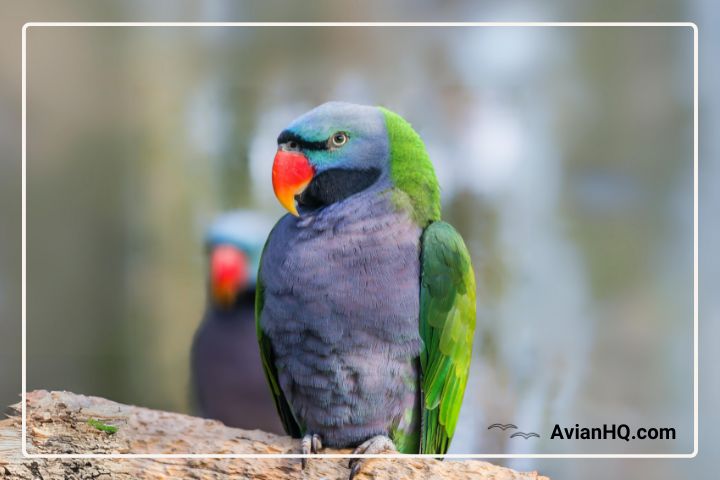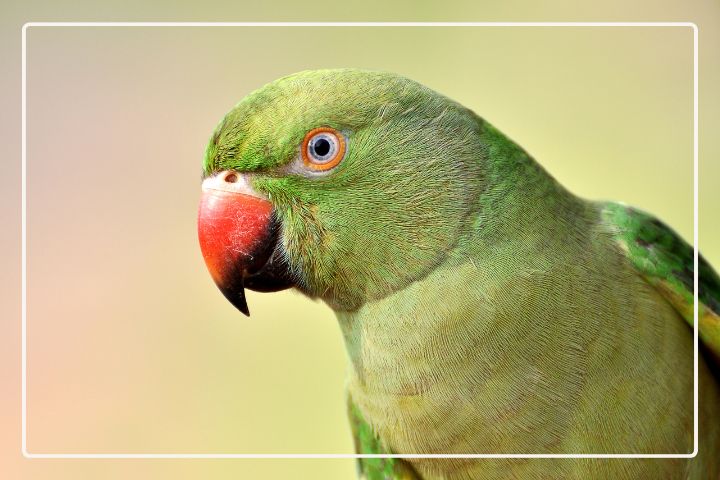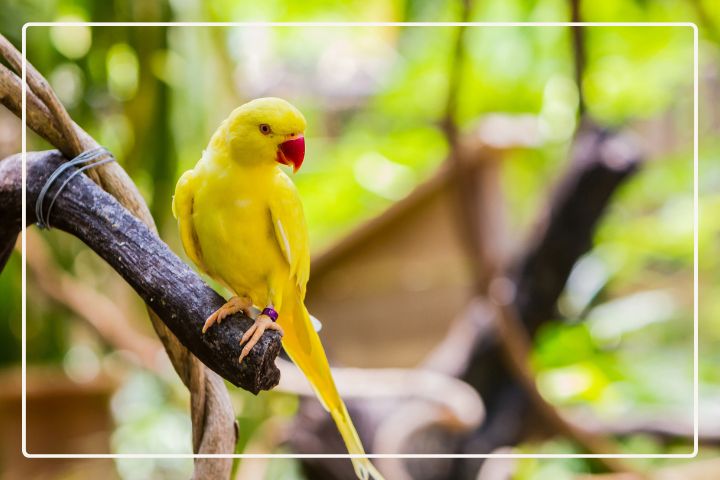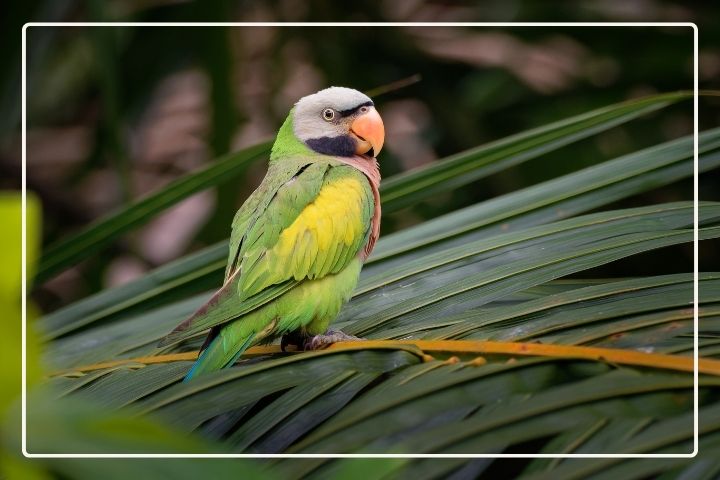Lord Derby’s Parakeet: Overview, Characteristics and Care
Welcome to our comprehensive guide on Lord Derby’s Parakeet (Psittacula derbiana), a beautiful and distinctive parrot species that has captured the hearts of bird enthusiasts worldwide. In this article, we will provide an overview of this fascinating bird, its physical characteristics, natural behavior, social structure, habitat, diet, breeding, and essential pet care tips.
Key Takeaways:
- Lord Derby’s Parakeet is a medium-sized parrot with elegant plumage and a distinctive appearance.
- They have specific dietary requirements and engage in intricate breeding behavior.
- Understanding their social structure, habitat, and behavior is essential to their proper care as pets.
- Health issues and daily rhythms are important considerations for ensuring their overall well-being.
- The different subspecies of Lord Derby’s Parakeet is classified under various conservation statuses.
Physical Appearance of Lord Derby’s Parakeet
One of the most striking features of Lord Derby’s Parakeet is their vivid plumage of greens, blues, and purples. This medium-sized parrot is approximately 45 – 50 centimeters or 18 – 20 inches long and weighs around 310 grams (11 oz).
Adult males and females both share a mostly green dorsal surface from behind, black facial markings around the eyes and lower cheeks, and pale yellow irises. However, the sexes differ noticeably in other aspects of their appearance. Males have a brilliant purple-blue crown, reddish-orange upper mandible, and yellow lower mandible. Females lack the blue crown and have an entirely black beak. Both sexes exhibit blue-grey to lavender coloration on the throat, breast, abdomen, and under-wing coverts. The tail feathers are various shades of green, some edged in blue. The thighs and vent area display yellowish-green feathers with blue edging.
Immature birds look more muted than adults. Juveniles have green crowns rather than the adult male’s striking blue, and their eye color is darker grey. Their bills start off orange-red on both mandibles before turning black in females and red/yellow in males. It takes 2-3 years for Lord Derby’s Parakeets to fully mature and develop their definitive adult plumage.
When fully mature, the “Derbyan Parakeet” is considered one of the most beautiful members of its genus.
Behavior and Temperament of Lord Derby’s Parakeet
Lord Derby’s Parakeet is not only an alluring bird to look at; they also have unique behavior and temperaments. Studying and understanding their behavioral patterns is essential to care for them properly.
These birds are highly intelligent and social creatures who thrive in the company of others. In the wild, they form tight-knit flocks and move in unison. Lord Derby’s Parakeet also exhibits distinct vocalizations that they use for communication. They produce a range of calls from high pitched chirps to low grunts, whistles, and screeches. Paying attention to their sounds can help determine their mood and behavior.
Lord Derby’s Parakeet is known to have a strong bond with their owners and is considered a devoted pet. However, their social and curious nature can make them mischievous and sometimes even destructive. They need plenty of exercise, mental stimulation, and interaction to stay healthy and happy.
When it comes to taming, Lord Derby’s Parakeet can be challenging due to their cautious and wary nature. It takes time, patience, and persistence to build trust and a bond with them. Positive reinforcement techniques such as offering treats or praise for good behavior work effectively.
Social Structure and Vocalizations of Lord Derby’s Parakeet
Lord Derby’s Parakeet is a highly social bird that forms tight-knit flocks in the wild. These flocks are often composed of family groups and are led by a dominant male and female pair. The birds within the flock frequently communicate with each other through a variety of vocalizations, including squawks, screeches, and whistles.
The birds also use their vocalizations to establish their place in the social hierarchy. For example, males often vocalize loudly and frequently to assert their dominance and attract a mate. Females, however, tend to communicate more softly and are responsible for choosing a mate based on their vocalizations and other displays of courtship.
When in captivity, Lord Derby’s Parakeets require plenty of social interaction to maintain their mental and emotional well-being. This includes spending time with their owners and other birds of their species, as well as providing toys and other forms of environmental enrichment.
Habitat and Distribution of Lord Derby’s Parakeet
Lord Derby’s Parakeet is native to the dense forests and woodlands of Southeast Asia, including Indonesia, Malaysia, and the Philippines. They are most commonly found in the humid lowland forests of Sumatra and Borneo.
Their natural habitat consists of thick vegetation, including rainforests and tropical deciduous forests. They are also known to inhabit forest edges, plantations, and agricultural fields.
Lord Derby’s Parakeet can thrive in both primary and secondary forests, and they are adaptable to a variety of forest types. However, they prefer tall trees with dense canopies and open understories.
Despite being native to Southeast Asia, Lord Derby’s Parakeet has become established in other parts of the world, including Hawaii, where they are considered an invasive species.
| Region | Habitat |
|---|---|
| Indonesia | Lowland forests, forest edges, plantations |
| Malaysia | Tropical deciduous forests, plantations |
| Philippines | Rainforests, forest edges, agricultural fields |
Due to deforestation and habitat loss, Lord Derby’s Parakeet is facing population decline and is classified as Near Threatened on the IUCN Red List of Threatened Species. Conservation efforts, such as habitat restoration and protection, are necessary to ensure the survival of this beautiful parrot species.
Diet and Feeding Habits of Lord Derby’s Parakeet
Meeting the dietary needs of Lord Derby’s Parakeet is essential for their optimal health and happiness as pets. In the wild, they primarily feed on fruits, seeds, and nuts, so it’s essential to provide a balanced diet that mimics their natural intake.
A diet that consists of high-quality pellets and fresh fruits and vegetables is ideal for Lord Derby’s Parakeet. Pellets should make up the majority of their diet, while fresh foods provide natural nutrients and variety. Offer a wide range of vegetables such as spinach, kale, broccoli, carrots and fruits such as bananas, apples, and grapes. Avoid feeding them avocados, chocolate, and caffeine, and always clean any uneaten food promptly.
Water should be changed daily and offered in a bowl that’s both clean and deep enough for the bird to bathe in. In addition, continue regular feeding timings and the provision of fresh food daily alongside pellets to ensure healthy eating habits.
Proper feeding habits are not only important for their physical health but also to prevent behavioral malfunctions. It is important to create a routine for feeding to help maintain their eating habits.
Feeding Tips for Lord Derby’s Parakeet
- Use a clean and shallow bowl for feed to avoid spilling.
- Provide fresh feeding of fruits and vegetables daily to supplement the staple diet of pellets.
- Ensure that pellets are of good quality, fresh, and stored correctly.
- Do not overfeed treats, as they can result in malnutrition and obesity.
Breeding Behavior and Reproduction of Lord Derby’s Parakeet
Lord Derby’s Parakeet engages in fascinating breeding behavior and has a unique reproductive cycle. These birds are monogamous, with pairs forming lifelong bonds. The breeding season typically begins in late winter or early spring.
The male parakeet initiates courtship displays, such as flapping his wings and bobbing his head, to attract a mate. Once a pair has formed, they will begin to construct a nest together. The female will lay 2-4 eggs, which both parents will take turns incubating for about 23-25 days.
Once the eggs hatch, the parents will continue to work together to care for their young. The chicks will fledge, or leave the nest, at around 8 weeks old and become independent. It’s important to note that breeding should only be attempted by experienced bird owners, as it requires knowledge of proper breeding techniques and can be stressful for the birds.
In captivity, it’s important to remove any unhatched eggs promptly to prevent the parents from becoming overly protective or agitated. Additionally, it’s essential to monitor the chicks’ growth and development closely and provide them with a suitable environment until they mature.
Pet Care for Lord Derby’s Parakeet
Keeping Lord Derby’s Parakeet as pets requires a significant amount of time and effort. However, with proper care, they can thrive and become wonderful companions. Below are some essential tips for pet care, taming, and training Lord Derby’s Parakeet.
Pet Care
Providing the right environment is crucial for the well-being of your pet. Lord Derby’s Parakeet needs adequate living space with access to fresh air and natural light. It’s essential to keep their cage clean and provide a variety of toys and perches for their mental and physical stimulation.
Proper nutrition is also vital for your pet’s health. A balanced diet includes fresh fruits, vegetables, and high-quality pellets or seeds. It’s best to avoid feeding them junk food or sugary treats, which can lead to obesity and other health problems.
Taming
Taming Lord Derby’s Parakeet requires patience and consistency. Start by spending time near their cage and talking to them in a soft voice. Offer treats and rewards to create a positive association with your presence. Gradually, you can start offering your hand for them to perch on and work towards hand-feeding.
Training
Lord Derby’s Parakeet is highly intelligent and can learn various tricks and commands. Positive reinforcement is the best way to train your pet. Use treats and praise to reward good behavior and avoid punishing them for bad behavior. Training sessions should be short and consistent to keep your pet engaged and motivated.
Overall, caring for Lord Derby’s Parakeet requires a significant investment of time and effort. However, the rewards of having a happy and healthy pet are worth it. With proper care, taming, and training, Lord Derby’s Parakeet can become a delightful companion.
Health Issues and Daily Rhythms of Lord Derby’s Parakeet
Keeping Lord Derby’s Parakeet healthy and happy requires paying attention to their daily rhythms and being aware of potential health issues. These birds are hardy and generally healthy when provided with a proper diet, exercise, and a clean living environment. However, as with any pet, there are a few things to keep in mind to prevent health issues.
Health Issues
Lord Derby’s Parakeet is susceptible to a few health issues, such as respiratory infections, mites, and fungal infections. It’s essential to observe your pet and watch out for any signs of sickness, such as lethargy, loss of appetite, or unusual behaviors. If you notice any of these symptoms, consult a veterinarian immediately.
Another common issue with parakeets is overgrown beaks. This occurs when the bird’s beak is not worn down naturally through use or if their diet lacks the necessary nutrients to keep the beak healthy. Providing your pet with appropriate toys and chew items and feeding them a well-balanced diet can help prevent this problem. If you notice your bird’s beak is overgrown, consult with a veterinarian or an experienced bird groomer.
Daily Rhythms
Lord Derby’s Parakeets are diurnal, meaning they are active during the day and sleep at night. They require a minimum of eight hours of sleep every night to remain healthy and happy. Be sure to provide your pet with a quiet, dimly lit space to rest. Covering their cage with a light cloth or blanket at night can also help signal that it’s time to sleep.
As social animals, Lord Derby’s Parakeets thrive on interaction and stimulation. Be sure to provide them with plenty of opportunities to play and exercise outside of their cage. Providing toys, perches, and swings can keep your pet engaged and mentally stimulated. Additionally, be sure to give them a little time and attention each day to help them feel loved and emotionally secure.
Lifespan, Subspecies, and Conservation Status of Lord Derby’s Parakeet
Lord Derby’s Parakeet, also known as Psittacula derbiana, has an average lifespan of 20-30 years in captivity. However, in the wild, their lifespan may be shorter (15 to 20 years) due to various factors such as predation and food availability.
There are no identifiable subspecies of Lord Derby’s Parakeet (Psittacula derbiana) that are currently acknowledged. However, taxonomic research is an ongoing process, and new information might emerge in the future that could potentially identify subspecies or genetic variations within this species.
In 2011, the status was changed from “least concern” to “near threatened” on the IUCN Red List. This indicates that the species is currently not at immediate risk of extinction, but its population is declining and could potentially become threatened in the near future if not properly managed or conserved. The change in status serves as a warning sign to prioritize conservation efforts and implement measures to protect the species and its habitat.
Conclusion
We hope this article has provided you with valuable insights into the fascinating world of Lord Derby’s Parakeet. These birds are unique in their physical appearance, behavior, and social structure, and require specific care to thrive as pets. Despite their captivating traits, Lord Derby’s Parakeet faces several challenges in the wild, including habitat loss and illegal trapping for the pet trade. It is important that we work towards protecting and conserving these beautiful birds and their natural habitats.
As pet owners, we can play our part by ensuring that our Lord Derby’s Parakeet receives the best possible care, including a nutritious diet, a stimulating environment, and regular check-ups with a veterinarian. By doing so, we can ensure that these magnificent birds live long, healthy, and happy lives.
We invite you to learn more about Lord Derby’s Parakeet and consider keeping them as pets if you are prepared to commit to their unique care requirements. With proper care and attention, these birds can make wonderful companions that will enrich your life and bring joy to your household.
Frequently Asked Questions
What is Lord Derby’s Parakeet?
Lord Derby’s Parakeet, also known as Psittacula derbiana, is a medium-sized parrot species with a distinctively elegant appearance.
What are the physical characteristics of Lord Derby’s Parakeet?
Lord Derby’s Parakeet has a medium-sized body. They have vivid green, purple, and blue plumage with black facial markings and pale yellow eyes. Males have a red upper mandible while females have an all-black beak.
What is the behavior and temperament of Lord Derby’s Parakeet?
Lord Derby’s Parakeets are active, noisy birds that can be aggressive and nippy, though they can be friendly and playful when well socialized.
How do Lord Derby’s Parakeets communicate?
Lord Derby’s Parakeets communicate through a variety of vocalizations including shrieks, chirps, and chatters. They use these vocalizations to establish social hierarchy and interact with members of their flock.
Where is the natural habitat of Lord Derby’s Parakeet?
The natural habitat of Lord Derby’s Parakeet is forest and woodland areas of Southeast Asia.
What do Lord Derby’s Parakeets eat?
Lord Derby’s Parakeets are herbivores that eat fruit, seeds, berries, nuts, buds, and leafy matter.
How do Lord Derby’s Parakeets breed and reproduce?
Lord Derby’s Parakeets engage in intricate breeding behavior, including courtship displays, nest-building rituals, and incubation of eggs. They typically breed in tree hollows, laying 2-4 eggs in a clutch, with the female incubating the eggs and both parents helping to raise the chicks.
What care do Lord Derby’s Parakeets need as pets?
As pets, Lord Derby’s Parakeets need a large cage, plenty of toys, fresh fruit and veggies, attention and socialization to thrive. This includes taming and training, creating an enriching environment, and ensuring their overall well-being.
What health issues should I watch out for in Lord Derby’s Parakeets?
Common health issues in Lord Derby’s Parakeets include respiratory infections, obesity, overgrown beaks, and eye issues like conjunctivitis.
How long do Lord Derby’s Parakeets live?
Lord Derby’s Parakeets have a lifespan that can vary depending on factors such as diet, care, and genetics. In captivity, the can live 20-30 years with proper care.
Are there different subspecies of Lord Derby’s Parakeet?
There are no known distinct subspecies of Lord Derby’s Parakeet.
What is the conservation status of Lord Derby’s Parakeet?
Lord Derby’s Parakeet is currently classified as Near Threatened on the International Union for Conservation of Nature (IUCN) Red List, with populations decreasing due to habitat loss, hunting, and trapping for the pet trade.








F*ckin’ awesome things here. I’m very glad to see your article. Thanks a lot and i am looking forward to contact you. Will you please drop me a mail?